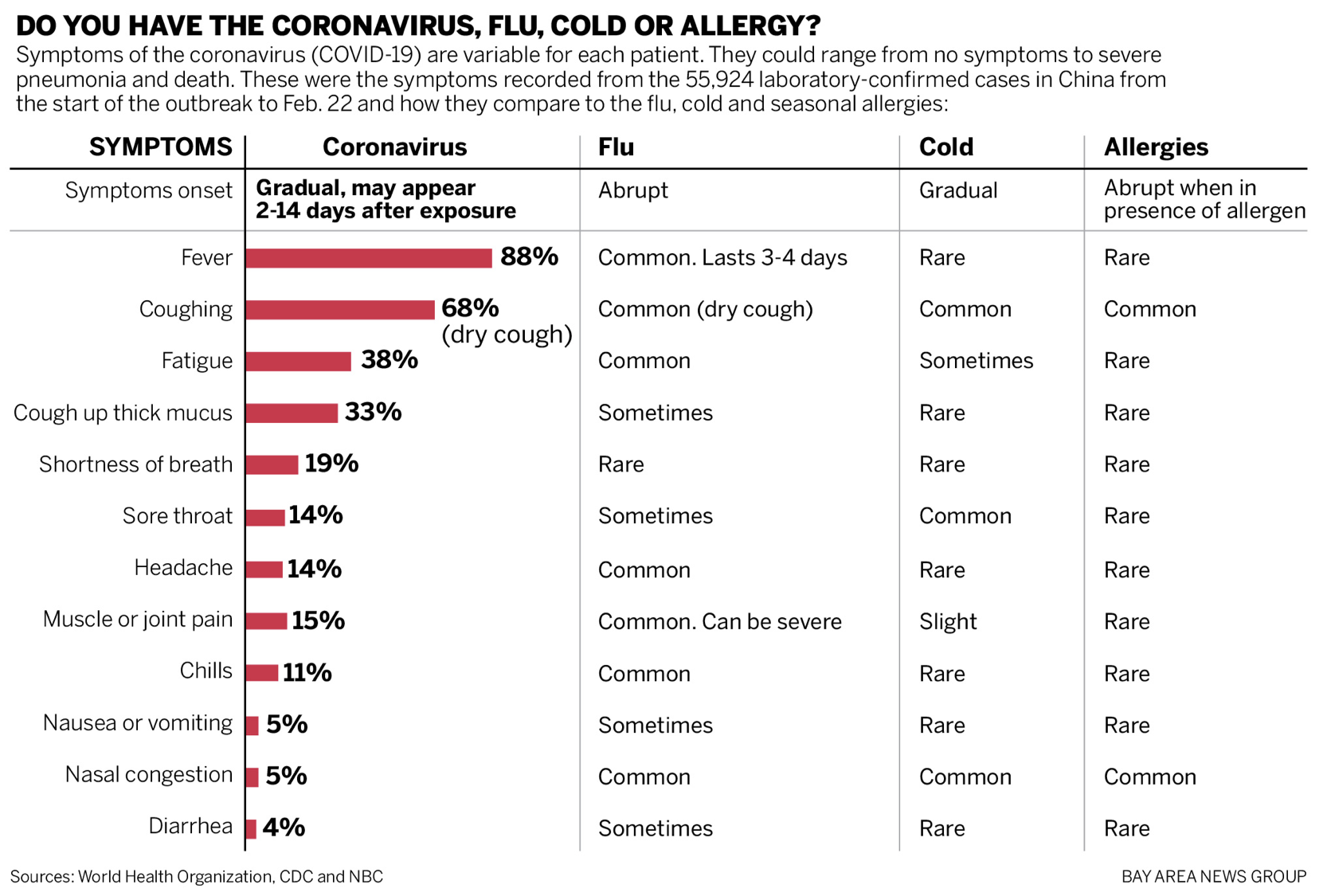
If the coronavirus wasn’t enough, it’s also cold and flu season. AND…if that wasn’t enough, we are also going into allergy season (it’s a lot, I know). But don’t worry, while some of the symptoms of all four are similar, each one has distinct qualities to figure out which infection you may have. Details for each are listed below:
Is It COVID?
Many different strains of the coronovirus have been making their way around the world. According to the CDC, at the time of this article, the variant EG.5 was responsible for 29.4% of cases of COVID in the United States at the end of September 2023, which was more than any other single circulating SARS-CoV-2 strain. That same week, a strain called FL 1.5.1 (or Fornax), which is reported to be surging rapidly in the U.S. and accounted for 13.7% of cases, was second, followed by a mix of other XBB strains and descendants of Omicron.
Some strains can cause only mild symptoms (like the common cold). However, some strains, like COVID-19 and its many variants, can cause severe illness.
Symptoms of COVID-19 can include:
– Shortness of breath
– Fever (above 100 degrees)
– Dry cough
– Gradual onset (two to 14 days after onset)
– Chest pain or tightness
– Sometimes headache
– Sometimes aches and pains
– Mild sneezing
– Sometimes fatigue, but it’s not predominate like the flu
– Diarrhea is rare
The severity of COVID-19 symptoms ranges from mild to severe. If you think you might have COVID-19, check out our section about how to get tested. If you want to go into a hospital, remember to call ahead and let them know your symptoms before you go in. They may have you go in at certain times or by yourself in an effort to protect hospital staff and other patients.
Is it Allergies?
Symptoms of seasonal allergies range from mild to severe and occur seasonally. The most common include:
– sneezing
– runny or stuffy nose
– watery and itchy eyes
– itchy sinuses, throat, or ear canals
– ear congestion
– postnasal drainage
– Less Common Symptoms Include:
– headache
– shortness of breath
– wheezing
– coughing
Since allergies can sometimes make people feel as though they’re getting sick, allergies mainly cause itchy and watery eyes, runny nose, congestion and sneezing.
A major difference between allergies and coronavirus is the presence of fever, a main symptom of coronavirus but not a feature in seasonal allergies.

Is it a Cold?
While you may feel “blah” and just not like doing, when you have a cold, the symptoms are generally mild compared to more aggressive viruses like the flu. A cold can cause any or all of these…








